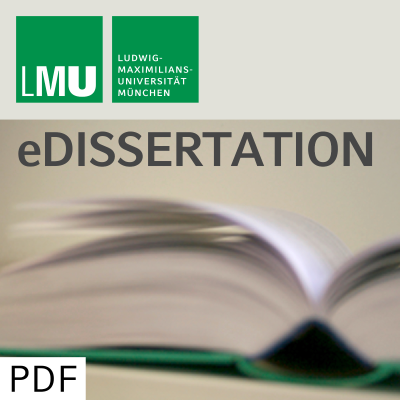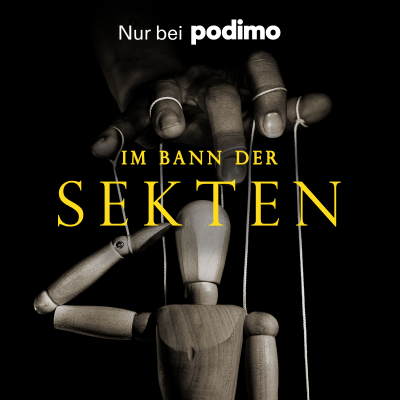
Fakultät für Philosophie, Wissenschaftstheorie und Religionswissenschaft - Digitale Hochschulschriften der LMU
Deutsch
Gratis en Podimo
Kostenlos hören bei Podimo
Starte jetzt und verbinde dich mit deinen Lieblingspodcaster*innen
- Vertraut von über 1 Mio. deutschen Hörer*innen
- Über 1.000 lokale Podcasts und Shows – nur bei Podimo
- Keine Zahlung nötig
Mehr Fakultät für Philosophie, Wissenschaftstheorie und Religionswissenschaft - Digitale Hochschulschriften der LMU
Die Universitätsbibliothek (UB) verfügt über ein umfangreiches Archiv an elektronischen Medien, das von Volltextsammlungen über Zeitungsarchive, Wörterbücher und Enzyklopädien bis hin zu ausführlichen Bibliographien und mehr als 1000 Datenbanken reicht. Auf iTunes U stellt die UB unter anderem eine Auswahl an Dissertationen der Doktorandinnen und Doktoranden an der LMU bereit.
Alle Folgen
41 FolgenLeben als kreatives Antworten
This dissertation is an investigation of temporality and time in light of Bernhard Waldenfels’ responsive phenomenology. Both intentionality, a classical concept in the phenomenolgy of Husserl, and responsivity, a concept developed by Waldenfels, are approaches to the riddle of time. Time is the main concern of metaphysical and religious discourse and must be taken into account in every consideraton of freedom. The dissertation consists of three main parts, which are divided into 49 chapters. In the First Part, “Otherness and Corporeality,” I analyze Waldenfels’ specific approach to the rethinking of the self by highlighting the experience of the other/the alien. The experience of the other makes a conclusive self-identification impossible. Due to its response to the demand of the other in the broadest sense, a self is generated. The self and the other co-originate, which is always a process and brings to light the significance of the sentient or lived body of a self. The sentient body, in which intentional consciousness is situated and embodied, is the “primal memory” and is therefore intrinsically related to an ultimate revelation of intentionality as the basic working principle of consciousness; this leads to consciousness’ being enclosed in and a slave to its own intentional stucture. With this as background, I understand Waldenfels’ demonstration of and emphasis on responsivity as an insight into freedom despite the fundamental intentionality of consciousness. In Part Two, “Temporality and Responsivity,” I set forth the profundity of the concept of responsivity with regard to temporality. Responsivity implies a freedom that necessarily takes the basic temporality of existence into account. In my discussion I touch on the analyses of consciousness found in modern biological psychology and traditional Buddhism. I stress that both intentionality and responsivity are based on temporality, which is the source not only of enslavement, but also of freedom. With Part Three, “Temporality and Responsivity as Related to the Problem of Religious Dialog,” I approach the topic of the religious in the lifeworld. The religious is rooted in everyday life in the lifeworld. The basis for religious dialog is not the scriptures of world culture, which are necessarily characterized by specific intentional structures. Everyday life, thanks to its temporality, is full of inexhaustible possibilities. A responsive life is of itself religious because it is open to the creativity of reality.
Friedrich Koenig und die Erfindung der Schnellpresse
Friedrich Koenig (1774-1833) revolutionierte mit der von ihm erfundenen Schnellpresse nach dem Prinzip der rotierenden Zylinder das seit Gutenberg herrschende Druckprinzip des flächigen Tiegeldrucks. Nach der Lehre zum Buchdrucker wanderte er nach England aus, erhielt dort seine Fähigkeiten zum Ingenieur und Unternehmer und entwickelte seine vier grundlegenden Patente. Zurückgekehrt nach Deutschland, gründete er in Oberzell bei Würzburg eine Werkstätte zur Fertigung seiner Druckmaschinen. Die daraus hervorgegangene Koenig & Bauer Aktiengesellschaft gehört heute zu den größten Druckmaschinenherstellern der Welt. Mit seinem entscheidenden Beitrag zur Industrialisierung in Bayern und Deutschland lassen sich aus Koenigs Werdegang Anforderungen der aufkommenden Industrialisierung an Staat und Gesellschaft bereits frühzeitig ablesen. Die großzügige Unterstützung, die er von den bayerischen Regenten erhielt, widerspricht der herrschenden Lehrmeinung, wonach die konservativ-restriktive bayerische Gewerbepolitik unter Ludwig I. der Industrialisierung ablehnend bis distanziert gegenüberstand.
Bild und Gleichnis bei Wittenstein
Der Begriff des Bildes ist einer der kennzeichnendsten Termini der Philosophie Wittgensteins. Er spielt in allen Phasen seines Denkens eine zentrale Rolle. In der "Logisch-philosophischen Abhandlung" wird das Bild logisch-figurativ definiert, jedoch findet man selbst hier eine erweiterte Bildauffassung, die sich aus der Synonymität zwischen den Begriffen „Bild“ und „Gleichnis“ ergibt. „Bild“ heißt also nicht nur logisches Bild, sondern auch analogisches Bild. Diese zweite Konnotation des tractarianischen Bildbegriffs als Gleichnis bzw. Analogie ist bereits vor der "Logisch-philosophischen Abhandlung" vorhanden und tritt in der Spätphilosophie Wittgensteins wieder auf. Es handelt sich dabei um eine Konstante seines Denkens, die hinter einigen Grundproblemen seiner Philosophie steckt. Beruhend auf dem "Nachlass" legt die vorliegende Arbeit die Vielfältigkeit der Gedanken Wittgensteins um den Bildbegriff dar sowie die Diversität der Kontexte, in denen sprach-philosophische Themen mithilfe dieses Begriffs behandelt werden.
Type-free truth
This book is a contribution to the flourishing field of formal and philosophical work on truth and the semantic paradoxes. Our aim is to present several theories of truth, to investigate some of their model-theoretic, recursion-theoretic and proof-theoretic aspects, and to evaluate their philosophical significance. In Part I we first outline some motivations for studying formal theories of truth, fix some terminology, provide some background on Tarski’s and Kripke’s theories of truth, and then discuss the prospects of classical type-free truth. In Chapter 4 we discuss some minimal adequacy conditions on a satisfactory theory of truth based on the function that the truth predicate is intended to fulfil on the deflationist account. We cast doubt on the adequacy of some non-classical theories of truth and argue in favor of classical theories of truth. Part II is devoted to grounded truth. In chapter 5 we introduce a game-theoretic semantics for Kripke’s theory of truth. Strategies in these games can be interpreted as reference-graphs (or dependency-graphs) of the sentences in question. Using that framework, we give a graph-theoretic analysis of the Kripke-paradoxical sentences. In chapter 6 we provide simultaneous axiomatizations of groundedness and truth, and analyze the proof-theoretic strength of the resulting theories. These range from conservative extensions of Peano arithmetic to theories that have the full strength of the impredicative system ID1. Part III investigates the relationship between truth and set-theoretic comprehen- sion. In chapter 7 we canonically associate extensions of the truth predicate with Henkin-models of second-order arithmetic. This relationship will be employed to determine the recursion-theoretic complexity of several theories of grounded truth and to show the consistency of the latter with principles of generalized induction. In chapter 8 it is shown that the sets definable over the standard model of the Tarskian hierarchy are exactly the hyperarithmetical sets. Finally, we try to apply a certain solution to the set-theoretic paradoxes to the case of truth, namely Quine’s idea of stratification. This will yield classical disquotational theories that interpret full second-order arithmetic without set parameters, Z2- (chapter 9). We also indicate a method to recover the parameters. An appendix provides some background on ordinal notations, recursion theory and graph theory.
Theory change and structural realism















































